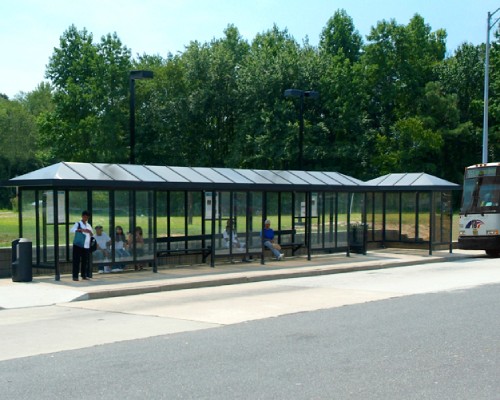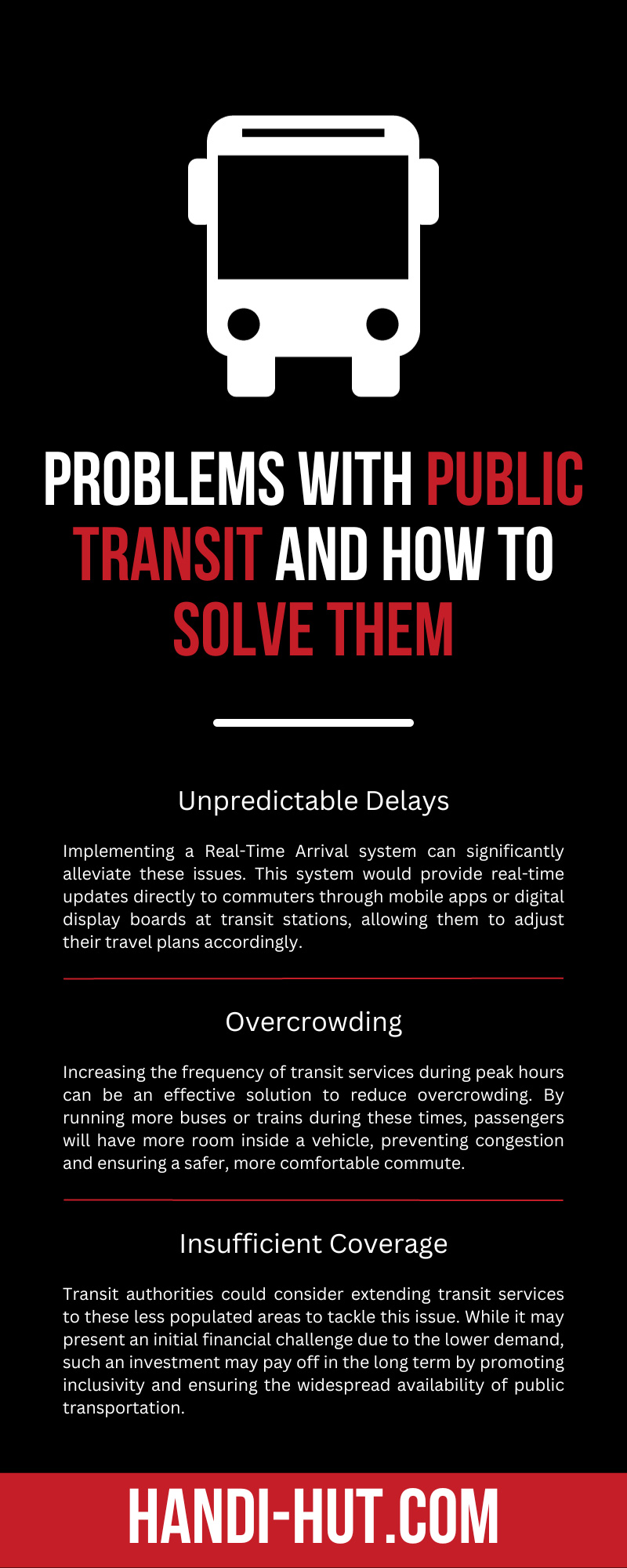
As the world continues to urbanize, public transit remains a critical lifeline, connecting people to jobs, schools, healthcare, and leisure activities. From buses to trams, ferries to metros, public transportation systems are an integral part of the social and economic fabric of cities worldwide.
Despite their critical role, these systems often face multiple challenges that can hinder their efficiency, affect their accessibility, and impede their role in promoting sustainable and equitable urban development. Overcrowding, inadequate infrastructure, poor scheduling, and insufficient funding are among the main issues plaguing public transit systems.
With strategic planning, innovative solutions, and effective implementation, cities can revamp and improve public transit systems. Understanding the problems with public transit will help cities implement proper techniques to solve them and get closer to the main goal of vibrant, sustainable, and accessible cities.
Unpredictable Delays
Unpredictable delays in public transit can happen due to many factors ranging from mechanical breakdowns, traffic congestion, and poor weather conditions. These delays cause inconvenience and can lead to missed appointments, late arrivals at work or school, and increased stress among commuters.
Implementing a Real-Time Arrival system can significantly alleviate these issues. This system would provide real-time updates directly to commuters through mobile apps or digital display boards at transit stations, allowing them to adjust their travel plans accordingly.
Overcrowding
Overcrowding in public transit is not only annoying but also raises concerns about safety and health. An overcrowded train or bus can become a breeding ground for diseases, especially in the context of the COVID-19 pandemic. It also increases the risk of accidents and compromises the comfort of the passengers.
Increasing the frequency of transit services during peak hours can be an effective solution to reduce overcrowding. By running more buses or trains during these times, passengers will have more room inside a vehicle, preventing congestion and ensuring a safer, more comfortable commute.
Insufficient Coverage
Insufficient coverage of public transit services is a major barrier to accessibility, particularly in suburban and rural areas. These areas often suffer due to less demand, resulting in inadequate or non-existent public transit services. This isolation challenges individuals without personal vehicles, low-income households, or those with disabilities, limiting their access to essential services such as healthcare, education, or employment opportunities.
Transit authorities could consider extending transit services to these less populated areas to tackle this issue. While it may present an initial financial challenge due to the lower demand, such an investment may pay off in the long term by promoting inclusivity and ensuring the widespread availability of public transportation.
Inadequate Infrastructure
Inadequate infrastructure is a pervasive issue that contributes to the underperformance of public transit systems. Aging infrastructure and poor maintenance can lead to frequent service disruptions, compromise safety, and deter people from using public transit. Infrastructure inadequacies can take many forms, including outdated vehicle fleets, dilapidated stations, lack of designated bus lanes, insufficient shelters at bus stops, and poor signage.
Regular maintenance is crucial to prevent the premature aging of infrastructure and to ensure the smooth operation of services. Upgrading infrastructure, such as improving walkway covers, can significantly enhance the user experience. At bus stops, shelters, seating, and adequate lighting can improve passengers’ comfort and safety while waiting.
Accessibility Challenges
Accessibility challenges in public transit significantly affect older adults, people with disabilities, and those with mobility issues. These individuals often face numerous barriers, such as inaccessible transit stations, lack of elevators or ramps, and inadequate seating, making their commute difficult and stressful.
Addressing these challenges requires a holistic, user-centric approach that considers the diverse needs of all commuters. Incorporating universal design principles in transit infrastructure is a key solution. Universal design involves creating environments that are inherently accessible to older adults, people without disabilities, and those with disabilities.
High Fares
The financial burden of public transit fares can be a significant barrier for many individuals, particularly those in lower-income brackets. In many cities worldwide, the cost of using public transit has steadily increased, making it less affordable for a significant proportion of the population. This issue is particularly prominent for people who rely on public transit for their daily commute to work or school.
To address the issue of high fares, transit authorities can consider implementing a sliding-scale fare system based on income. This system would adjust transit fares based on a rider’s ability to pay, making public transit more affordable for lower-income individuals.
Environmental Impact
The environmental impact of public transit is a significant issue that needs attention urgently to combat climate change and promote sustainable urban living. Traditional public transit systems, particularly those reliant on diesel or gasoline-powered vehicles, contribute substantially to air pollution. They release many harmful pollutants, such as nitrogen oxides, particulate matter, and greenhouse gases, which harm air quality, public health, and climate change.
Electric and hybrid vehicles produce fewer emissions, have lower energy consumption, and reduce dependency on fossil fuels, making them a more sustainable alternative. However, the transition to cleaner vehicles is only part of the solution. Considering the energy sources used to power these vehicles is also important.
Inadequate Security
Inadequate security is a significant deterrent for many potential public transit users. People need to feel safe while using public transportation, and concerns about personal safety, especially during late hours, can prevent many from utilizing these services.
Enhancing security measures is crucial in increasing the safety and perception thereof in public transit systems. A comprehensive security strategy could include the installation of CCTV cameras in transit vehicles and stations.
Poor Customer Service
Poor customer service in public transit manifests in various forms and can significantly impact a user’s transit experience. This can range from impolite or unhelpful staff, unclear or incorrect information about routes and schedules, to inefficient handling of complaints and grievances.
To solve public transit problems as important as this, it’s necessary to address poor customer service immediately with a multi-pronged approach. This includes training transit staff in customer service skills to ensure courteous and helpful interactions with passengers.
Lack of Information
The lack of accurate and timely information about public transit services is a common concern among users. This problem affects users in a variety of ways. For instance, not knowing the exact schedules can result in missed buses or trains, while a lack of clear route information can confuse users about which service to take or where to disembark.
Solving this issue requires a comprehensive strategy that makes all necessary information accessible, clear, and up to date. Developing user-friendly mobile apps can provide users with the information they need at their fingertips. These apps could include GPS-based tracking of vehicles, real-time updates on delays or schedule changes, detailed route maps, and fare calculators.
Public transit is an integral part of any city’s mobility framework because it makes a city more functional and efficient. Addressing these challenges can significantly improve the usability and efficiency of public transit, making it a more attractive option for everyone.

